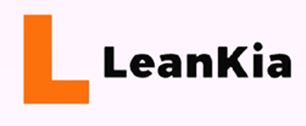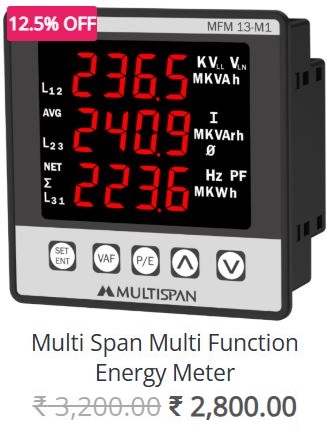In today’s rapidly evolving business landscape, organizations are constantly striving to improve their processes, boost employee morale, and maintain high levels of productivity. One effective approach to achieving these goals is through Small Group Activities (SGA). SGAs bring employees together in focused, collaborative teams to solve problems, share ideas, and improve workflows. By integrating SGAs into your organizational culture, you can enhance both employee engagement and process efficiency, creating a dynamic and successful workplace.
In this blog, we’ll explore how implementing SGAs can lead to higher employee engagement and help organizations optimize processes for better overall performance.
What Are Small Group Activities (SGA)?
Small Group Activities (SGA) are structured, short-term collaborative exercises where small groups of employees—typically between 3 to 10 people—work together to address specific challenges, improve processes, or generate innovative ideas. These activities are designed to be participatory, encouraging all group members to actively contribute their insights, skills, and expertise.
The focus of SGAs can vary widely, from solving operational inefficiencies to brainstorming creative solutions for customer service issues. They are often focused on improving a particular aspect of the business, such as streamlining workflows, enhancing product quality, or increasing team communication.
Why Implement Small Group Activities (SGA)?
1. Boosting Employee Engagement
One of the biggest challenges that organizations face is keeping employees engaged and motivated. Employees who feel disconnected from their work or their team are less likely to be productive and more likely to experience burnout. SGAs can counter this by fostering an environment where employees feel valued, heard, and empowered.
Here’s how SGAs can enhance employee engagement:
-
Empowerment and Ownership: SGAs give employees the autonomy to solve problems and make decisions. This sense of ownership over their work can significantly boost morale and motivation, making employees feel like their contributions directly impact the organization.
-
Collaboration and Teamwork: When employees work together in small groups, they have the opportunity to collaborate across departments and share ideas. This builds a sense of camaraderie and helps foster positive relationships, which can increase job satisfaction and reduce turnover.
-
Recognition and Contribution: SGAs encourage open discussions, allowing all team members to contribute their knowledge and ideas. This not only helps employees feel appreciated but also recognizes their problem-solving skills, increasing their engagement and sense of value.
2. Improving Process Efficiency
In today’s competitive business environment, process optimization is key to staying ahead. SGAs can play a crucial role in identifying inefficiencies, developing solutions, and driving continuous improvement across processes.
Here’s how SGAs contribute to process enhancement:
-
Problem-Solving Focus: SGAs are often designed to tackle specific operational challenges, such as delays, waste, or bottlenecks in workflows. By concentrating on these issues in small teams, SGAs allow organizations to address problems quickly and efficiently.
-
Cross-Functional Insights: Small groups often consist of employees from various departments, bringing a diversity of perspectives. This cross-functional collaboration leads to better problem-solving and more innovative solutions, as individuals with different expertise come together to identify opportunities for improvement.
-
Continuous Improvement: SGAs foster a mindset of ongoing evaluation and process refinement. When small groups regularly meet to assess and optimize processes, they help create a culture of continuous improvement, where there’s always a focus on enhancing workflows and driving operational excellence.
Steps to Implement Small Group Activities (SGA)
Implementing SGAs into your organization requires a structured approach to ensure they are effective and impactful. Here’s a step-by-step guide to successfully rolling out SGAs:
1. Define Clear Objectives
Before implementing SGAs, it’s crucial to define the purpose of the activities. Ask yourself questions like:
- What specific processes need improvement?
- What challenges or inefficiencies do we need to address?
- How can we align SGAs with organizational goals?
By setting clear objectives, you ensure that the SGAs remain focused on achieving tangible improvements.
2. Select the Right Team Members
Select employees from various departments or roles to ensure diversity in skills and perspectives. A good mix of experience levels and backgrounds can lead to more creative and effective solutions. Keep the group size manageable—usually 3 to 10 people—to maintain focus and encourage active participation from everyone.
3. Provide Proper Training and Resources
For SGAs to be successful, participants need the right tools and knowledge. Provide training on effective collaboration, problem-solving techniques, and any relevant methodologies (such as Lean, Six Sigma, or Kaizen) that might be used during the activities. Ensure that employees have access to the resources they need, such as data, equipment, or support from other departments.
4. Set a Structured Agenda
Structure the SGAs to ensure that the team stays focused on the task at hand. A typical SGA session might include:
- Introductions: Brief introductions to the topic or problem being addressed.
- Brainstorming: Encouraging team members to suggest solutions and ideas.
- Analysis and Discussion: Reviewing ideas and analyzing their feasibility.
- Action Plan: Developing a clear plan for implementing the best solutions.
The structured approach ensures that SGAs remain productive and achieve measurable results.
5. Follow-Up and Track Results
Once the activity is completed, it’s essential to track the implementation of the solutions developed by the team. Follow up with the group to assess whether the changes have led to the desired improvements. If necessary, adjust and refine the solutions to optimize outcomes further.
Tracking results and recognizing the success of the team can also boost engagement and foster a sense of accomplishment.
Examples of Successful SGA Implementation
1. Toyota’s Kaizen Teams
Toyota’s commitment to continuous improvement is a prime example of how SGAs can enhance both employee engagement and process efficiency. The company uses small cross-functional teams to identify and solve operational challenges on the shop floor. These Kaizen teams work together to find ways to eliminate waste, improve quality, and streamline production processes. As a result, Toyota has built a culture of continuous improvement, where employees at all levels feel empowered to contribute to the company’s success.
2. GE’s Quality Circles
General Electric (GE) has implemented small group activities in the form of “quality circles,” where employees work together to address quality control issues and suggest process improvements. These circles have contributed to GE’s high standards of product quality and operational efficiency. By regularly participating in SGAs, employees at GE are continuously engaged and motivated to improve both their work and the company’s performance.
3. Healthcare: Improving Patient Care
In healthcare organizations, SGAs are used to drive improvements in patient care and operational efficiency. For example, small teams of nurses, doctors, and administrative staff may come together to develop strategies for reducing patient wait times or improving the accuracy of diagnoses. These small, focused groups have helped healthcare providers deliver higher-quality care while also enhancing employee collaboration and satisfaction.














